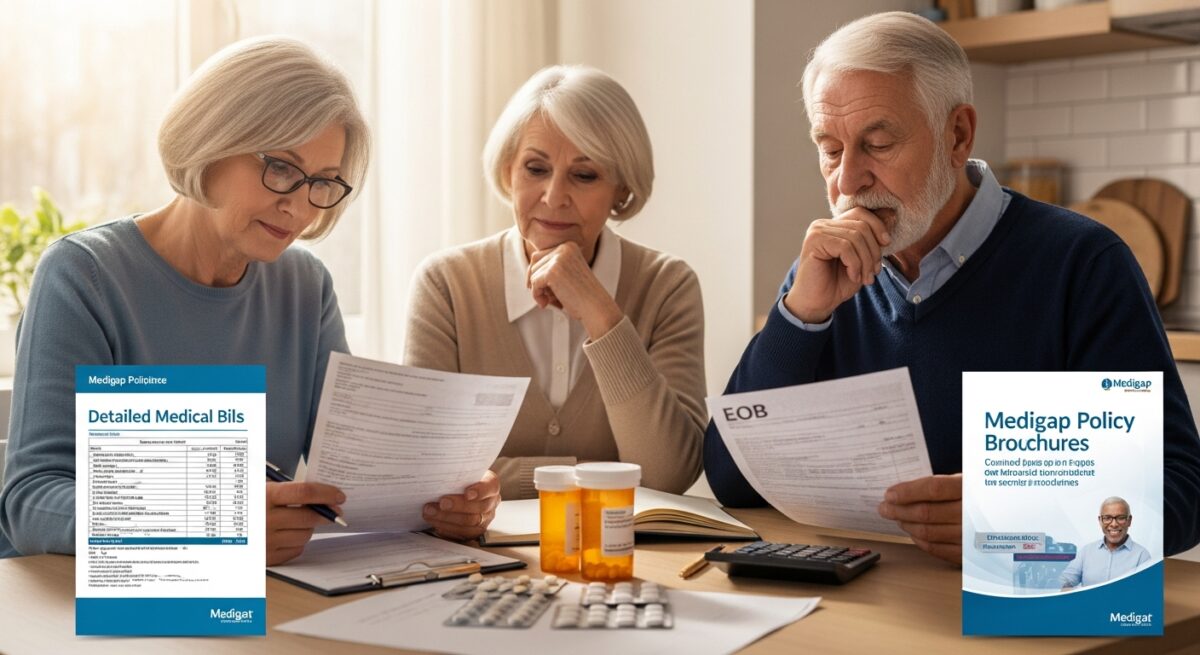Prescription Coverage Medicaid: A Comprehensive Guide to Getting Your Meds Covered
Understanding prescription coverage under Medicaid can feel overwhelming, but it’s essential for ensuring you get the medications you need. Medicaid is a state and federal program designed to provide health coverage for low-income individuals and families. One of the critical components of this program is its prescription coverage, which helps cover the costs of necessary medications. Each state has its own rules and formulary, so it’s important to familiarize yourself with the specifics in your area to maximize your benefits.
When you enroll in Medicaid, you’ll typically have access to a wide range of prescription drugs. However, not all medications may be covered, and some might require prior authorization. This means that your healthcare provider may need to demonstrate that a specific medication is necessary for your treatment. Understanding the nuances of prescription coverage under Medicaid can help you navigate these requirements and avoid unexpected out-of-pocket expenses.
If you find yourself needing a medication that isn’t covered, don’t lose hope. Many states have processes in place for appealing coverage decisions or requesting exceptions. Additionally, your healthcare provider can often assist in finding alternative medications that are covered under your plan. By staying informed about your prescription coverage under Medicaid, you can ensure that you receive the medications you need without breaking the bank.
Eligibility Requirements for Medicaid Prescription Coverage
Understanding the eligibility requirements for prescription coverage in Medicaid is crucial for anyone seeking assistance with their medication costs. Generally, Medicaid is designed to support low-income individuals and families, but the specific criteria can vary from state to state. To qualify, applicants typically need to meet certain income thresholds, which are often set at or below the federal poverty level. Additionally, factors such as age, disability status, and family size can influence eligibility, making it essential to check your state’s guidelines for the most accurate information.
Another important aspect of eligibility is citizenship or immigration status. Most states require applicants to be U.S. citizens or legal residents to qualify for Medicaid benefits, including prescription coverage. If you’re unsure about your status or how it affects your eligibility, it’s a good idea to consult with a local Medicaid office or a healthcare navigator.
They can provide personalized guidance and help you understand the documentation needed to apply for coverage. Lastly, it’s worth noting that some states have expanded their Medicaid programs under the Affordable Care Act, which has broadened access to prescription coverage Medicaid for many individuals. This expansion means that even if you previously didn’t qualify, changes in your income or family situation might make you eligible now. Always keep an eye on updates from your state’s Medicaid program, as policies and eligibility criteria can change, ensuring you don’t miss out on the support you need for your medications.
How to Apply for Medicaid Prescription Coverage
Applying for Medicaid prescription coverage can seem daunting, but it’s a straightforward process once you know the steps. First, you’ll want to check if you meet the eligibility requirements, which can vary by state. Generally, Medicaid is available for low-income individuals and families, pregnant women, children, and people with disabilities. You can find specific eligibility criteria on your state’s Medicaid website or by contacting your local Medicaid office. This initial step is crucial as it sets the foundation for your application process.
Once you’ve confirmed your eligibility, the next step is to gather the necessary documentation. This typically includes proof of income, residency, and identification. Having these documents ready will streamline your application process. You can apply for Medicaid prescription coverage online, by mail, or in person at your local Medicaid office. If you choose to apply online, be sure to visit your state’s official Medicaid website to ensure you’re using the correct portal and to avoid any potential scams.
After submitting your application, it’s important to follow up to check on its status. Medicaid will review your application and may request additional information or documentation. Once approved, you’ll receive a Medicaid card, which you can use to access your prescription coverage. Remember, Medicaid prescription coverage can significantly reduce your out-of-pocket costs for medications, so it’s worth the effort to apply and ensure you’re getting the healthcare support you need.
What Medications Are Covered by Medicaid?
When it comes to understanding what medications are covered by Medicaid, it’s essential to know that each state has its own specific list of covered drugs, often referred to as a formulary. Generally, Medicaid provides prescription coverage for a wide range of medications, including both brand-name and generic options. This means that if you have a chronic condition or require ongoing treatment, you can likely find the medications you need under your state’s Medicaid plan. However, it’s always a good idea to check with your local Medicaid office or their website for the most accurate and up-to-date information regarding your specific coverage. In addition to standard medications, Medicaid also covers certain specialty drugs that may be necessary for more complex health issues.
These can include treatments for conditions like cancer, multiple sclerosis, and rheumatoid arthritis. It’s important to note that while Medicaid aims to cover a comprehensive list of medications, some drugs may require prior authorization. This means your healthcare provider will need to demonstrate that the medication is medically necessary before it can be covered. Understanding these nuances can help you navigate your prescription coverage Medicaid more effectively. Lastly, if you find that a medication you need isn’t covered, don’t lose hope.
Many states have processes in place for appealing coverage decisions or requesting exceptions. Additionally, your healthcare provider can often help you explore alternative medications that are covered under your plan. Remember, the goal of Medicaid is to ensure that you have access to the medications necessary for your health and well-being, so don’t hesitate to reach out for assistance if you need it.
The Process of Getting Your Meds Covered
Navigating the process of getting your meds covered by Prescription Coverage Medicaid can seem daunting at first, but it doesn’t have to be. The first step is to ensure that you are eligible for Medicaid, which varies by state. Once you confirm your eligibility, you can apply for coverage through your state’s Medicaid program. This typically involves filling out an application form, which may be available online or at local Medicaid offices. Don’t hesitate to reach out to a representative if you have questions; they can guide you through the process and help clarify any confusing aspects.
After your application is submitted, the next step is to select a Medicaid plan that includes prescription coverage. Each plan has its own list of covered medications, known as a formulary. It’s crucial to review this list to ensure that your necessary medications are included. If you find that a specific medication is not covered, you can discuss alternatives with your healthcare provider or request an exception from your Medicaid plan. This is where understanding your rights and options becomes essential, as it can significantly impact your access to necessary treatments.
Once you have your plan in place, you can start filling your prescriptions at a pharmacy that accepts Medicaid. When you go to pick up your medications, simply present your Medicaid card, and the pharmacy will process your claim. If you encounter any issues, such as a medication being denied, don’t panic. You can appeal the decision or seek assistance from your healthcare provider. Remember, the goal of Prescription Coverage Medicaid is to ensure you have access to the medications you need, so stay proactive and informed throughout the process.
Appealing Denials for Medicaid Prescription Coverage
Navigating the world of prescription coverage, Medicaid can sometimes feel overwhelming, especially when you face a denial for a medication you need. If your request for coverage has been denied, don’t lose hope! There are steps you can take to appeal the decision. Start by reviewing the denial letter carefully; it will usually outline the reasons for the denial. Understanding these reasons is crucial as it will help you gather the necessary documentation and information to support your case during the appeal process.
Once you have a clear understanding of why your prescription coverage Medicaid claim was denied, it’s time to gather evidence. This may include medical records, a letter from your healthcare provider explaining why the medication is essential for your treatment, and any other relevant documentation. Make sure to follow the specific appeal process outlined by your state’s Medicaid program, as each state may have different requirements and timelines for submitting an appeal. After you’ve submitted your appeal, it’s important to stay proactive. Keep track of all communications with Medicaid and your healthcare provider.
If you don’t hear back within the expected timeframe, don’t hesitate to follow up. Remember, appealing a denial can be a lengthy process, but persistence is key. By advocating for yourself and ensuring you have all the necessary information, you increase your chances of getting the prescription coverage Medicaid you need to manage your health effectively.
Tips for Maximizing Your Medicaid Prescription Benefits
Maximizing your prescription coverage Medicaid benefits can significantly ease your healthcare expenses. Start by familiarizing yourself with the details of your specific plan. Each state has its own Medicaid program, and the coverage can vary widely. Check what medications are included in your formulary, which is a list of covered drugs.
Knowing which medications are available can help you avoid unexpected out-of-pocket costs and ensure you get the medications you need without hassle. Another effective strategy is to communicate openly with your healthcare provider. If you find that a prescribed medication isn’t covered under your prescription coverage Medicaid plan, don’t hesitate to ask your doctor about alternatives. They may be able to suggest a different medication that is covered or even provide samples to help you manage your condition while you sort out your coverage.
Additionally, your doctor can help you navigate prior authorization requirements, which some medications may need before being covered. Lastly, consider utilizing pharmacy discount programs or generic medications whenever possible. Many pharmacies offer discount cards that can lower your costs even further, and generic drugs are often just as effective as their brand-name counterparts. By being proactive and informed about your prescription coverage Medicaid options, you can ensure that you get the most out of your benefits and maintain your health without breaking the bank.
Looking for quality coverage? Get your free quote now at newhealthinsurance.com or call 📞 (833) 877-9927.





